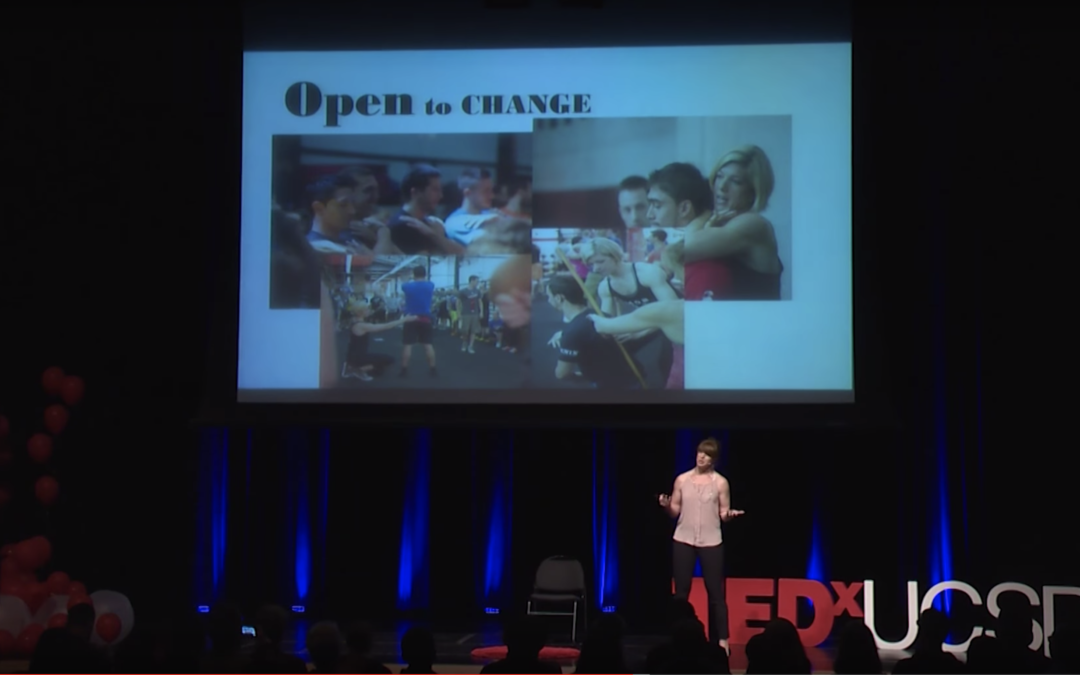
by Theresa Larson | Feb 1, 2019 | Blog
How many of you think that you’re a warrior?
You may think that you’re not but the definition of being a warrior is taking ownership of your life. Being resilient. Being adaptive. Changing.
Who we are as humans is what makes us warriors.
12 years ago, I was 24 years old and stationed in Iraq, a first lieutenant in the Marine Corp. We were in a “hot zone” and I was in charge of 50+ marines. Our job was to run supplies to other bases in the area, as well as finding land mines in the area. The other part of my job was being an escort for female insurgents.
In 2005, the night before the first Iraqi election, and I have over 100 marines in my command. We were supposed to go run Jersey barriers in Fallujah and the risk of land mines or IED’s was high. Professionally I was on point, but on the inside, I was seriously struggling.
I was dealing with anorexia, but I wasn’t ready to acknowledge it. I was there in battle about 50% and then the other 50% of me was dealing with the addiction I had created. And that night, in 2005, was a come to Jesus moment for me. I was dealing with an exercise and food addiction and I had people that were counting on me, so I had to do something about it.
So, the next morning I walked myself into my company commander’s office and told him I needed help. He didn’t understand, so he asked me if I wanted a desk job. At that moment, I became a warrior, but really my battle was just beginning.
I was sent home, outwardly as a failure, but inwardly I knew I had done the right thing. The Marines know what to do with an alcoholic, but they don’t have any idea what to do with an eating disorder. But it was at that moment, in asking for help, that my warrior journey happened.
Listen to the full TEDx talk at UCSD HERE
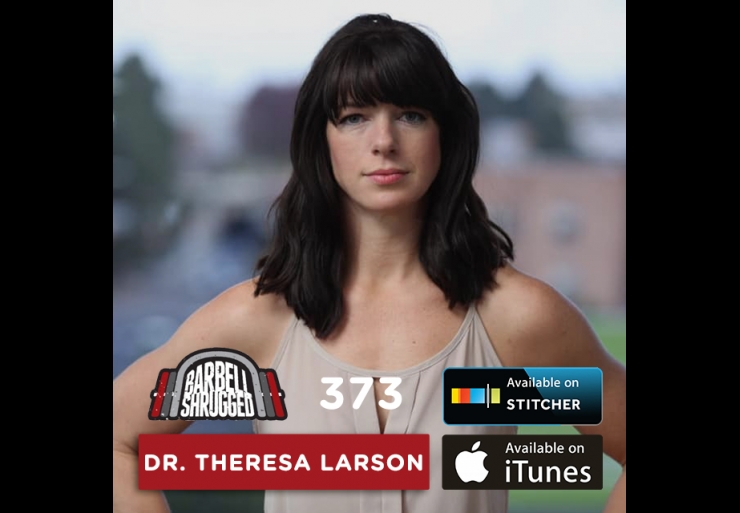
by Theresa Larson | Feb 1, 2019 | Blog
On her FOURTH appearance on the Barbell Shrugged Podcast, Dr. Theresa Larson is here to talk about everything from finding your calling to the difference between adaptive and disabled.
Without further ado, let’s get into it!
When Dr. T first started Physical Therapy, it became readily apparent that traditional PT wasn’t for her. She began to explore other platforms to further her passion and impact more people. Slowly she’s started to shift to more of a storyteller, working with businesses, building a media platform, and literally impacting people globally.
But of all the things that Dr. T does in her life, working with the Adaptive community really “fills her cup.” Society views them as the disabled population, but they’re so much more than that. She’s currently working to change the conversation around the term “disabled” and shifting it to “adaptive.”
The adaptive community is one of the most mentally resilient communities ever and has becomes Dr. T’s tribe and her healing environment. They’re coming off pain medication and anti-depressants and fighting to get their lives back.
The beauty of the adaptive community is that they’re constantly proving that movement is literally medicine. By moving they are showing that they can cure anxiety, depression, physical pain, and overcome the biggest obstacles in life.
And the message that they’re sending is clear: if they can do it, what is our excuse?
This episode really gets into the down and dirty of the power of finding your tribe and how health impacts leadership. Listen below and make sure to leave a review!
What we’re covering in this episode:
- Larson’s story and the journey to finding her calling
- How asking for help can elevate your business and the power of a tribe
- Training adaptive athletes and why you need to understand the individual
- Repattern your thought process to overcome hardship
- The difference between adaptive and disabled
- Why creating sustainable motivation is critical for success
- How to help others while protecting your energy and why health starts with leadership
- Creating healthy habits in your everyday routine
- The steps you can take today create a fulfilling life
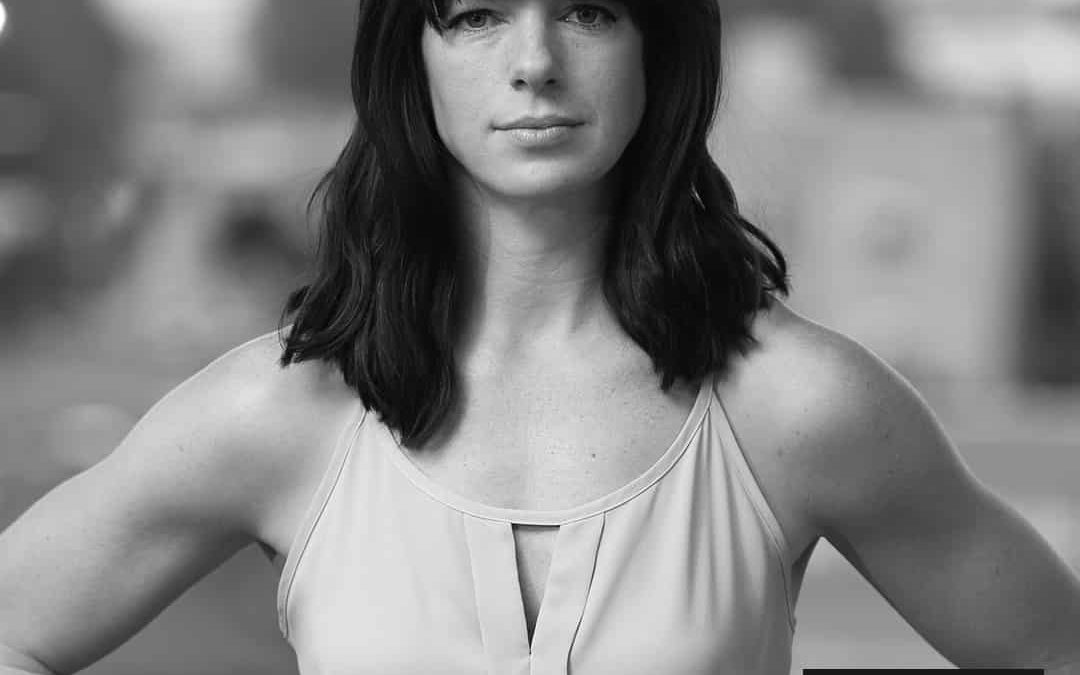
by Theresa Larson | Dec 28, 2018 | Blog
I had the absolute pleasure of being on Steph Gaudreau’s podcast Harder to Kill Radio last week! I cannot wait for you to listen.
Be Adaptive Be Vulnerable, Dr. T
Harder to Kill Radio, Episode #159: Learning to Adapt to Major Life Changes
Trigger Warning – This episode contains conversation about miscarriage and eating disorders.
Or, listen on your favorite app: iTunes (Apple Podcasts) | Spotify | Stitcher | TuneIn| Google Play | I Heart Radio
On this episode we’re talking about what exactly it means to have a “New Normal” in your life and the healing and growth that comes along with that. Dr. Theresa Larson is actually one of my “real life” friends, who lives in San Diego, is a fellow introvert, a physical therapist, a mom, ex-marine, speaker, and so much more!
Without further ado, let’s get into this.
Dr. T actually didn’t discover she was an introvert until she started seeing patients and experienced a pretty significant burnout. She started working with a biofeedback therapist and found out that she was a highly sensitive introvert and started to work on the things the therapist recommended she do to get her energy back.
As she started to work on things more, she started to figure out more about herself and discovered that she needed to do the kind of work where she’d perform/speak and give a big burst of energy and then be able to retreat and heal until giving that energy again. Which has led her to latest endeavor, the My New Normal Podcast.
Theresa was actually one of my first 50 guests on the podcast and has really adapted to find her New Normal since she was first on.
When she first aired, she had just released her book, Warrior, where she talks about being a marine and suffering from an eating disorder and her inspiring journey. Since that episode, she’s become a mother of a healthy baby boy, but not before experiencing the heartache of a miscarriage right when her book was released.
Dr. T’s life is the literal definition of adaptation and I can’t wait for you to hear this full episode!
In this episode we’re talking about:
- How to manage being an introvert on a day to day basis
- Bringing self-compassion and boundaries into motherhood and health and wellness
- What an adaptive athletes workout and training regime looks like
- Educating people on what it is they can do to relieve their worst symptoms and mindsets
- Overcoming invisible and visible injuries to increase representation of all abilities in the fitness space
Resources Mentioned in the Show:
by Theresa Larson | Oct 31, 2018 | Blog
In Honor of World Mental Health Day (October 10, 2018)
We talk a lot about freedom in the United States of America.
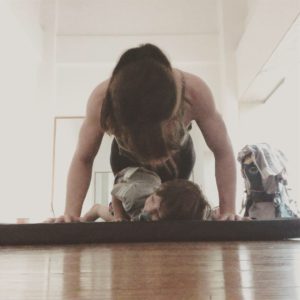
The freedoms we have in the US of A are amazing. However, an increasing amount of people really don’t get to experience them.
Why?
Depression.
According to the World Health Organization, depression is the leading cause of disability globally. Over 300 million adults across the globe are depressed right now, with 16.2 million of those in the US. A full 10.3 million of those Americans experience an episode that is categorized as ‘significant impairment’.
So are we truly free if depression is on the rise?
Depression, in my experience, is the ultimate freedom killer. So to cut right to the important stuff, here are my C.O.R.E principles I try to follow to manage how I feel. Use these or share these to help you or others fight this invisible wound and take freedom back.
1: I love Anais Nin’s quote, “Our world shrinks of expands in proportion to ones courage.” It takes real courage to stand up to what you fear or are feeling low about. When it comes to depression, I find it helps to stand up to “it” like it is something you do not want in your life, and see it as something you want removed. Remember this disease is NOT you, rather something you struggle with. Shift your focus to how much you have grown and start to help someone else grow around you.
2: It takes breathing hard (exercise) and breathing slow and deep (meditation) to really reap the benefits of what oxygen can do for your body. None of this shallow mouth breathing we typically engage in. Get at least 30 minutes of exercise or movement 5 days a week, and on top of that 5-10 minutes of deep slow breathing a day. With the breathwork, focus on keeping your breath rate to 6-8 breaths per minute. If you want to get even simpler, the next time you have a “reactive” thought come into your head, consider taking 1 loooong breath sequence before you do anything else. Take a 10 second inhale, hold it for 10 seconds, exhale for 10 seconds, and wait 10 more seconds before the next breath. Do that once before you react/feel low and see how it helps you. Think of it as a free drug.
3: Rest. You must sleep 7-9 hours a night according to the National Sleep Foundation. For me this is non-negotiable. I have a toddler so some nights are questionable, but you better believe I protect my sleep like my son protects his binkie.

4: It takes time for tissue to change – up to 12 months for connective tissue depending on the tissue and if it was injured. So start to tend to your gnarly parts and stiff areas DAILY. Areas with a big bang for your buck are your thoracic spine, your side butts, and your upper traps (those pieces of meat riding up to your ears). Mobilizing these is a physical way to relax your physiology. In conjunction with breath-work, it’s amazing. Don’t forget that eradicating stiffness takes time, so spend a minimum of 10 minutes a day on this.
You better believe I take my own advice. Even though I’m traveling, I am working on my C.O.R.E. daily because I know that my future mind and body will thank me for being consistent.
So there you have it. Four C.O.R.E. tools to help navigate depression.
Remember, it’s a daily task. It’s a process, not a pill.
PS. I am not saying medication, hormone therapy, or some other medicinal resources are not helpful. But consider what you can do RIGHT NOW as you read this. If you are interested in learning more about this invisible wound and what you can do about it, listen to Episode 1, of the The My New Normal podcast coming Nov 14th on how to build an unbreakable mind.
by Theresa Larson | Oct 30, 2018 | Blog
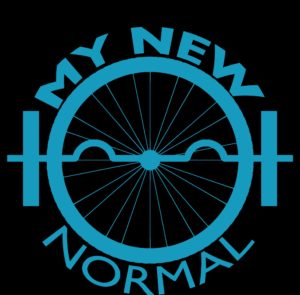 So what does My New Normal mean?
So what does My New Normal mean?
To me, it means that regardless of past injury, loss, trauma or change, you are taking your health and destiny into your own hands. I’ve been refining this concept of My New Normal over the last couple of years, and I’m pleased to announce that it am launching a podcast about it in November!
Upcoming newsletters will include exclusive episodes on overcoming adversity and the science behind the methods that have helped me and many others overcome challenges to get where they are today.
The 3 pillars of this My New Normal movement are:
- MINDSET
- FUNCTION
- RECOVERY
These pillars are based on science, history, and practical application daily by yours truly and many others who have come before me.
Stay tuned for upcoming info on the podcast!
And now for something COMPLETELY different…
My family and I are traveling to India for the month of October. That will be my new normal for the month. I don’t like crowds, but it doesn’t get much more crowded than India. While India is half the geographic size of the U.S., it has 4 times as many people (1.3 billion).
Nevertheless, I am going into this eyes wide open and prepared to experience something that makes me uncomfortable. How else do we truly grow? While I love my community here in San Diego, I love experiencing, learning, and living in other cultures. I gain so much perspective on life from doing this, and it reminds me of yet again what is truly important. Not money, things, or vanity, rather time with those I love and collecting experiences.
So what are we going to do there? Definitely going to try out for a Bollywood film, dance, take naps, visit small lands that are densely populated, work a little, write, hike, maybe chase down the Dalai Lama in his exile, meditate, do yoga, and hang with the locals.
P.S. Stay tuned for Episode X, coming Nov 14th where my husband and I uncover all things “My New Normal” and what this podcast is all about.






 So what does My New Normal mean?
So what does My New Normal mean?